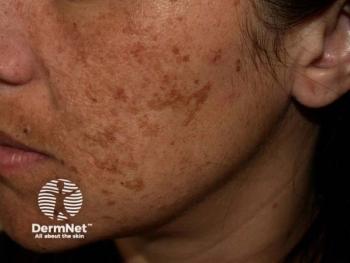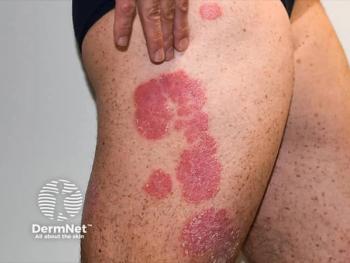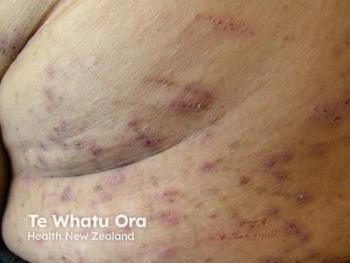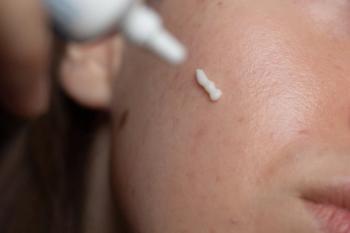
Q&A with Steven Dayan, MD, FACS: Unpacking the Full Impact of Neurotoxins with Patient-Reported Outcomes
According to new research from Steven Dayan, MD, FACS, PROs are reshaping aesthetic medicine, enhancing Botox treatment insights and prioritizing holistic patient care.
In a new paper titled "Revealing the patient perspective: Evolution of patient-reported outcome measures in botulinum toxin studies in aesthetic medicine,” a team of researchers explores the growing importance of patient-reported outcomes (PROs) in demonstrating the full scope of physical and psychosocial benefits offered by neurotoxin treatments like BOTOX Cosmetic (onabotulinumtoxinA).1 Steven Dayan, MD, FACS, lead author and board-certified facial plastic surgeon in Chicago, Illinois, spoke exclusively to Dermatology Times about these findings and what they mean for clinicians providing patient-centered and holistic aesthetics treatment via neurotoxins.
Dermatology Times: Could you begin by giving an overview of the publication? What were the main findings that came about from this research?
Dayan: The publication explores the critical role that PROs play in demonstrating the benefits of neurotoxin treatment beyond just change in physical appearance. The findings suggest PROs are an essential piece of advancing treatment innovation and that prioritizing patient-centricity and regulatory compliance in PRO development can enhance understanding of aesthetic treatment benefits.
Dermatology Times: How do newer, more comprehensive PROs like the Facial Line Outcomes-11 (FLO-11) and Facial Line Satisfaction Questionnaire (FLSQ) address limitations of previous tools and better the patient and clinician experience?
Dayan: Both FLSQ and FLO-11 were developed and validated with input from regulatory bodies and implemented into onabotulinumtoxinA pivotal studies. FLO-11 encompasses a broad group of concepts related to UFL, allowing patients to assess how they look (tired, stressed, angry, not having a smooth face, not rested), how they feel (older, less attractive), and how much their facial lines bother them. EMA has accepted FLO-11 to establish presence of psychosocial impact at baseline as entry criteria for BOTOX FHL registrational studies. FLSQ incorporates an even broader set of concepts than FLO-11 for exploring patient perspectives. It assesses various aspects relating to treatment expectations and satisfaction (e.g., onset, duration, improvement in facial lines, natural look), emotional/psychosocial impact (e.g., feeling old/angry/tired, effects on self-esteem), likelihood of continuing treatment or recommending it to a friend, and the degree to which expectations were met. Treatment satisfaction results (FLSQ item-5) are included in BOTOX regulatory labels. While FLO-11 and FLSQ are not available for public use, the concepts identified during development of these PROs are relevant for clinician-patient dialogue. As the paper states, “PROs are important for assessing the outcomes that ultimately matter most, thereby facilitating physician-patient communication around the potential benefits and informing individualized treatment decision-making.”
Dermatology Times: How do the benefits of BOTOX Cosmetic extend beyond just physical changes and improvements?
Dayan: PRO findings show that benefits of BOTOX Cosmetic go beyond improving physical features such as frown lines and crow’s feet – patients report treatment can also result in a positive psychological impact on confidence, self-esteem, and overall perception of attractiveness. This is particularly important in aesthetic medicine, where the patient is the fundamental decision maker.
Dermatology Times: As a plastic surgeon, how have you personally observed this shift towards a more patient-centered approach in the clinic?
Dayan: The shift toward a more patient-centered approach in both product innovation and patient care across aesthetics has been significant. While patient-centricity in drug development is found in many therapeutic areas, its application in aesthetic medicine is unique. First, aesthetic treatment procedures are often elective, so understanding satisfaction is critical in demonstrating treatment value. Second, PROs are required for approval by agencies like the FDA and EMA, making them vital for clinical trials and product labeling. Lastly, many aesthetic conditions have appearance-related psychosocial impacts on confidence, mood, and self-esteem, so assessing improvement in these areas is important. PROs enable providers to address specific patient needs and goals, leading to better outcomes and satisfaction. In the clinic, I see younger patients prioritizing psychological wellness and their motivations for seeking treatment go beyond physical appearance, so PRO data and findings align with how this generation is thinking.
Dermatology Times: How can clinicians use these findings to better approach conversations and treatment planning with patients about BOTOX and aesthetic medicine in general?
Dayan: Satisfaction with treatment, satisfaction with natural look, and improvement in psychosocial impact (i.e., confidence, self-consciousness) with aesthetic treatment can be just as important in guiding consultations and treatment options and assessing treatment outcomes as physical improvements. By understanding these broader benefits, providers can ask questions of their patients to understand their experiences, needs, and priorities more fully, which can help better manage overall patient expectations and deliver more satisfying results.
The future of aesthetics is to consider the psychosocial impact of our interventions, whether it be cosmetics, injectables or surgery. I am thankful to Allergan Aesthetics for initiating and pioneering this pathway of thinking and investigating with BOTOX Cosmetic. Aesthetic medicine in the last 25 years has taken monumental steps, modernizing into a premier field of medicine. It is no longer a field relegated to vanity, but rather a field that is helpful to people from all walks of life, ages, genders, and cultures.
Reference
1. Dayan S, Rivkin AZ, Ogilvie P, et al. Revealing the Patient Perspective: Evolution of Patient-Reported Outcome Measures in Botulinum Toxin Studies in Aesthetic Medicine. J Cosmet Dermatol. 2025;24(7):e70311. doi:10.1111/jocd.70311
Newsletter
Like what you’re reading? Subscribe to Dermatology Times for weekly updates on therapies, innovations, and real-world practice tips.


















